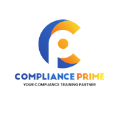It’s an inevitable part of business, employees come, and eventually, they go. Maybe they’ve found a better opportunity, maybe they’re relocating, or maybe they’ve just decided to make a change. Whatever the reason, one thing’s for sure: when an employee walks out that door, they’re not just taking their personal belongings. They’re also walking away with a ton of valuable knowledge, hard-earned experience, and context that’s often critical to the success of their team.
And that’s where many companies drop the ball. Too often, organizations are so focused on welcoming new hires that they forget the importance of saying goodbye the right way. A proper employee exit process isn’t just about collecting keys and disabling email access. It’s about knowledge transfer, compliance, and ensuring that nothing important falls through the cracks.
In this blog, we’re shining a light on one of the most overlooked yet crucial HR practices: the Employee Exit Checklist. Whether you’re an HR professional or a business owner, this guide will walk you through everything you need to cover to ensure smooth, compliant, and constructive employee offboarding.



The Complete Employee Exit Checklist
Here’s a detailed checklist to help you exit employees the right way, efficiently, professionally, and with minimal disruption.
1. Formal Resignation Process
- Acknowledge employee resignation in writing (email or letter).
- Confirm last working day and any notice period obligations.
- Clarify whether the employee is eligible for rehire (especially if the exit is on good terms).
A formal record helps with compliance and future references.
2. Knowledge Transfer Plan
- Ask the employee to document key processes, tools, and contacts.
- Arrange handover meetings with team members or their successor.
- Use tools like shared drives, wikis, or project management software to archive this information.
Don’t assume they’ll “just explain it.” Structure the knowledge transfer.
3. Exit Interview
- Conduct a structured exit interview (in-person or virtual).
- Focus on:
- Why are they leaving?
- What the company did well.
- What could’ve been improved.
- Keep it constructive. You’re not interrogating them, you’re learning from them. Learn more about handling constructive feedback in exit interviews From Employees
Insight: Exit interviews often reveal more than internal surveys ever will.
4. Recover Company Assets
- Laptop, phone, ID card, access cards, company credit cards, uniforms, etc.
- Use an asset return form so nothing is forgotten.
Forgotten equipment adds up. Have a checklist ready.
5. IT and Data Access Revocation
- Disable access to:
- Email and messaging platforms.
- Internal systems and databases.
- Third-party software accounts.
- Redirect emails if necessary.
- Ensure data backup from personal devices (if used for work).
Think cybersecurity. Former employees shouldn’t have lingering access.
6. Final Paycheck and Benefits
- Calculate and process:
- Final salary.
- Any unused leave or overtime pay.
- Deductions or reimbursements (if applicable).
- Provide information on:
- Health insurance or COBRA (if applicable).
- Retirement accounts.
- Tax documents (like W-2, Form 16, etc.).
Be timely. Delays in final pay can sour an otherwise smooth exit.
7. Legal & Compliance Documentation
- Provide any necessary:
- Non-disclosure agreements (NDAs).
- Non-compete or non-solicitation reminders.
- Final release or clearance forms.
Protect your business and your employee’s rights.
8. Update Internal Teams
- Inform relevant departments (IT, Finance, Payroll, Security).
- Communicate the departure to the team respectfully and appropriately.
- Update org charts, email lists, and responsibilities.
Silence breeds gossip. Transparency breeds trust.
9. Offboarding Feedback & Process Improvement
- Evaluate how the exit process went.
- Ask the departing employee and the team what could be improved.
- Update your exit checklist if something was missed.
A strong offboarding process evolves with every exit.
10. Stay-in-Touch Strategy (Optional, but Smart)
- Add the employee to alumni networks (if your company has one).
- Keep doors open for future collaboration or rehiring.
- A simple LinkedIn connection goes a long way.
Today’s former employee might be tomorrow’s client, or even your next hire.
Conclusion: Parting Ways the Right Way
Losing a good employee is never easy, but managing their exit doesn’t have to be messy. An effective exit checklist helps you tie up loose ends, capture knowledge, protect your company’s assets, and leave the door open for a positive future relationship.
More importantly, it signals professionalism, structure, and respect, for both the organization and the departing team member.
So the next time someone hands in their notice, don’t just shake hands and wish them well. Run through the checklist, close the loop, and make sure nothing valuable walks out the door unnoticed. A smooth exit isn’t the end of a chapter, it’s just a well-written one.For more insights on implementing effective wellness programs and HR best practices, check out our Human Resources webinars to stay informed and inspired.


